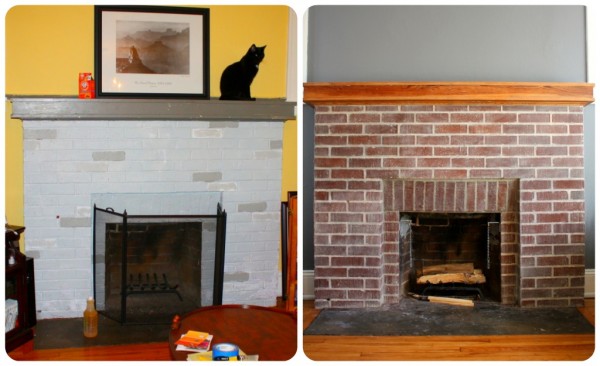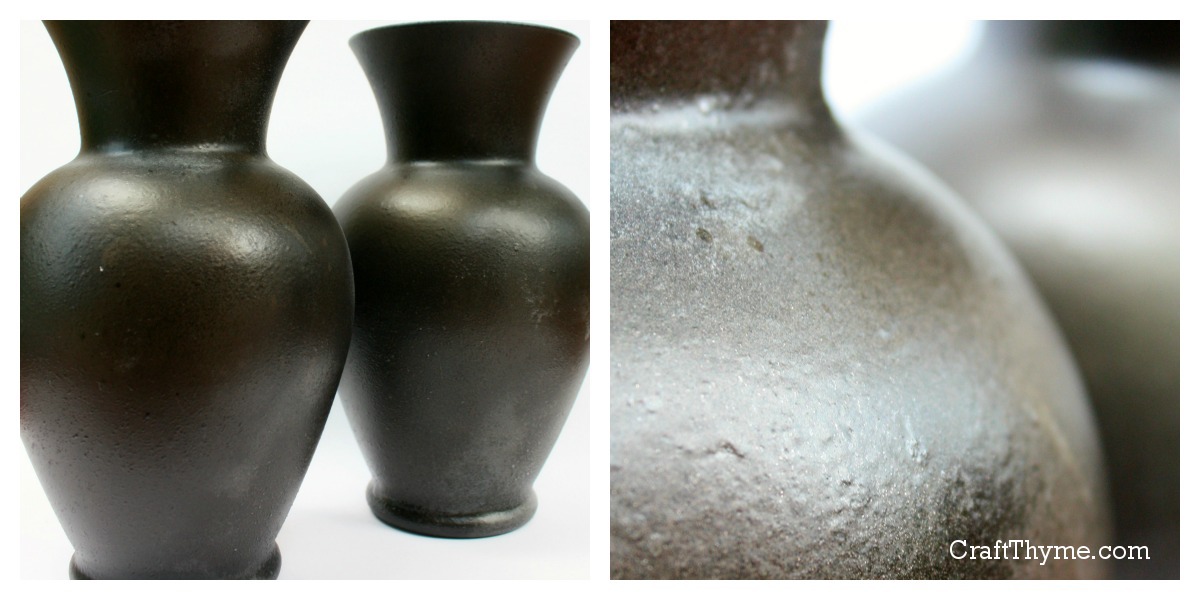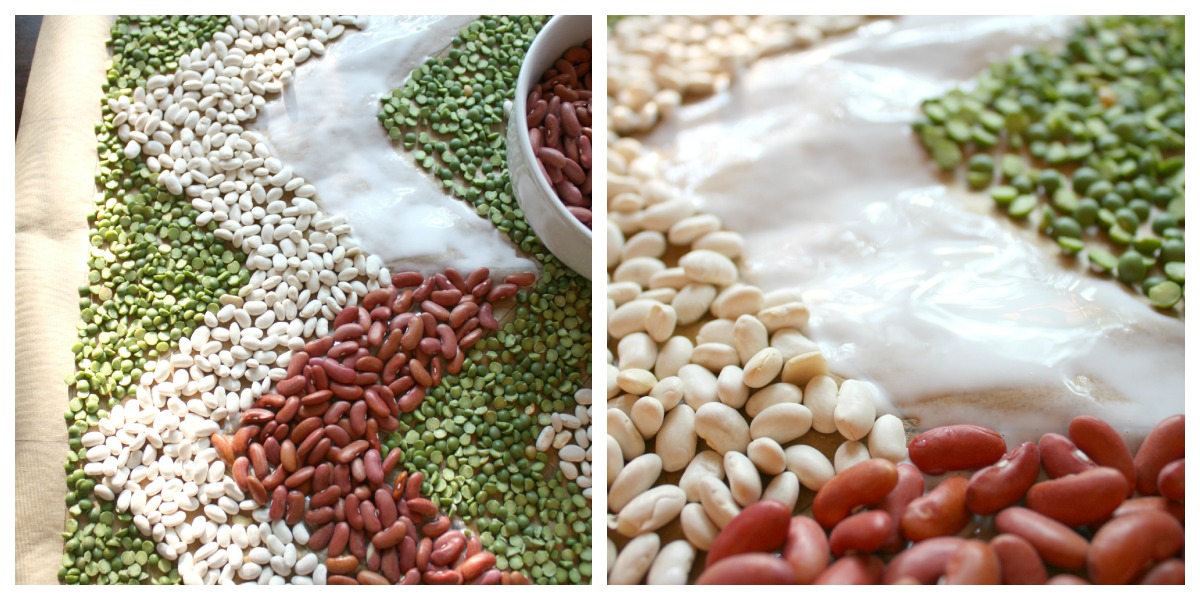
Interested in other ways to strip paint from brick? See Part I of ‘How To Remove Paint From Brick’.
Using SOY-Gel* is pretty easy but there are a few things you can do to make the product work a little better. So let the paint stripping process begin!
Supplies: Drop Cloth*,tape, newspaper, SOY-Gel*
, cheap/old paint brush, 2-3 inch STIFF Paint Scraper*
(about the size of one short side of a brick), Stainless Steel Wire Brush*
(best size is one you can grip comfortable, if it is too big then your will not be able to get the necessary pressure. Having two is better than one!), thick rubber gloves, old rags/towels
Useful extras: Second or third stainless steel brush (we didn’t have this), coarse steel wool, someone with lots of upper body strength
1. Begin by covering your work area: I can not stress this enough; I’m a neat painter but even I couldn’t control the mess. The stripper makes the old paint into a sticky goo that will repaint anything it lands on. I suggest putting a layer of painters cloth or plastic over whatever you want to protect. The painter’s tape does an okay job of keeping the gel off of woodwork. On top of the drop cloth I would lay a layer of newsprint (more on that later).
2. Glop (yes this is my technical term) the stripper on the brick: The directions suggest spraying it, but as I didn’t have the necessary equipment so I used a cheap paint brush. It is important to put a much thicker layer than your would paint; at least 1/8″. As you work you’ll discover the correct amount, but it is better to start thicker.
3. Wait: Yes, this is the boring part. I got into a rhythm of glopping it on in the morning and then scrapping it after I got home from work and the baby went to bed. However, there is a point at which it doesn’t make any difference how long you leave it. For me that was around 8 hours after that it didn’t seem to work any better. If you are going to let it set more than a couple of hours I suggest covering it with plastic wrap. I tried to be eco-conscious and reuse plastic bags or not use plastic at all. Trust me it was a fail, if the gel starts to dry then it becomes hard and tacky and you’ll have to use a lot more muscle to get it off. Plastic bags just didn’t cover it well enough but plastic wrap worked great.
4. Scrape, now the fun part begins: Don your rubber gloves, these will protect your hands from scraping against the brick and the sticky mess. Make sure you have newspaper under the area your going to scrape. Then take your scrapper and go to town. The old paint should fall on the newspaper and you can use the newspaper to wipe the scrapper on periodically.
Depending on how many layers of paint you have the four above steps can be repeated. For six layers of paint and rough-faced brick it took three layers. Two scraping and one scrubbing. Ah yes, the scrubbing…
5. Scrub with your brush: If you have smooth faced brick this may not be as big of a deal, however I was cursed blessed with rough brick. Basically once you have scraped as much paint off of the brick you’ll want to get that stainless steel brush out and start scrubbing. You can use any method as long as it involves scrubbing till your arms feel like rubber. Periodically the brush will get full of paint crud, at this point use the edge of the scraper to remove as much as possible (this is where another brush would come in handy b/c you can remove the goo much easier when it sets a bit). Also, you can rub any smoother areas down with steel wool.
6. Scrub with brush again: IMPORTANT, if you still have paint left and are going to do this scrub put a thin layer of paint remover on and let it set a couple of hours. The paint is pretty loose, but with out this lubricant (yes I used lubricant in a sentence) you will burn the brick with the brush. This last layer is a good time to enlist whichever person has the most upper arm strength (Patrick) in, but warn them if they over scrub it will literally blacken the front of the brick.
7. Wash down: I used an ancient towel and a bucket of water with another old towel to soak up the water at the bottom. You might even do this step periodically while scrubbing. It isn’t necessary, but cuts down on the scrubbing.
8. Realize some paint will remain: Unless you have some nice smooth brick your going to have particles of paint left. Or let’s put it this way; I got to a point where I liked the look and decided it was time to stop scrubbing.

Notes: Please, please, please remember to check for lead when working with old paint. Also, This is a physically exhausting process. I worked in 2 ft sections so as to make progress but not be overwhelmed. This took many hours over multiple days weeks. Always remember to test these products in your home first because your results might not be exactly like mine. In other words if this messes your home up don’t come looking for me.




















